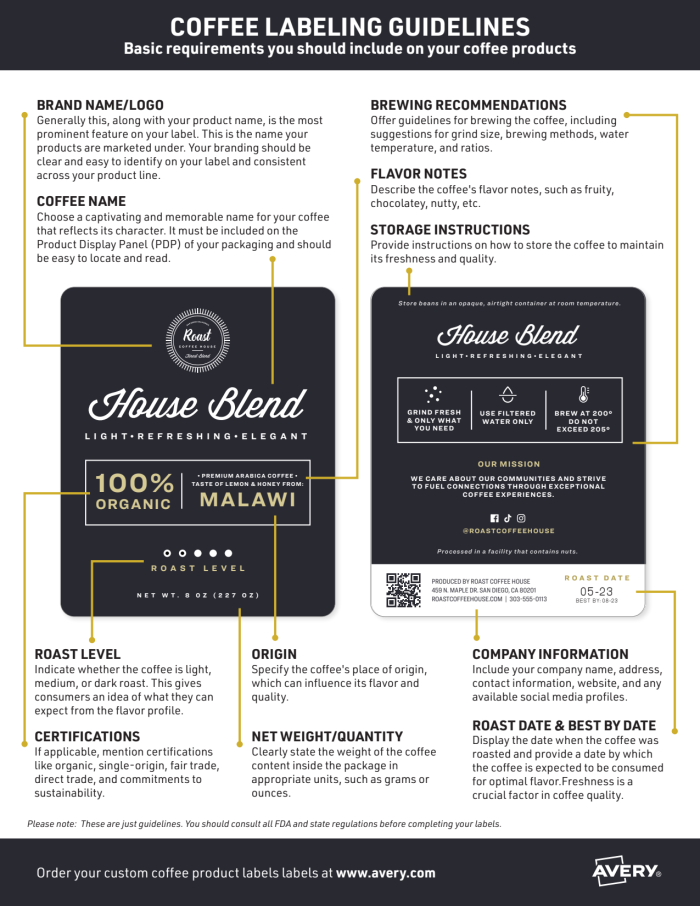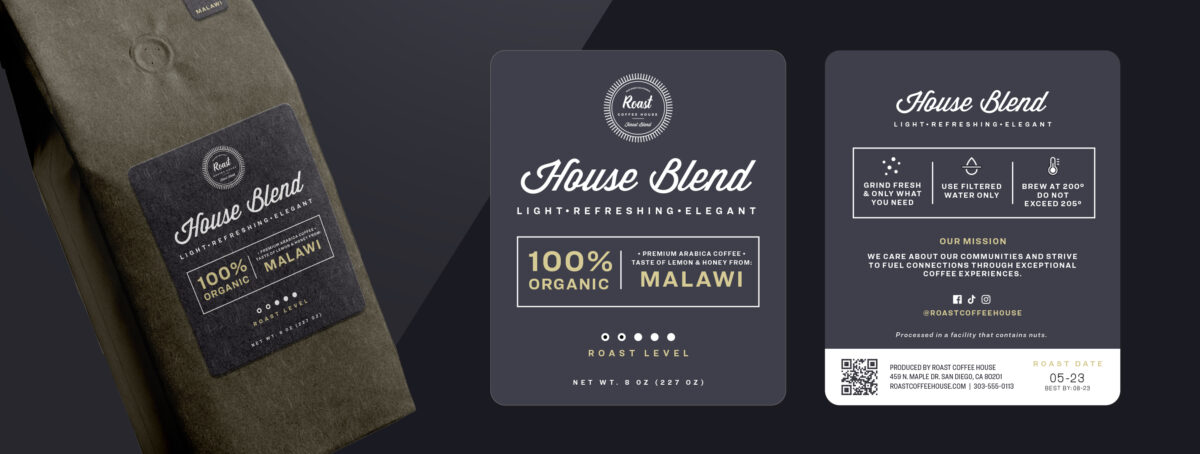A step-by-step guide on making coffee labels
Coffee labels play a key role in enticing customers and conveying important information about your coffee products. A well-designed label not only captures the essence of the coffee but also provides essential details that help consumers make informed choices. Failure to label your coffee properly can also lead to recalls, which can damage your brand and your bottom line. Whether you’re a small coffee roaster or a large-scale distributor, creating captivating and informative coffee labels can set your product apart and enhance your brand image. In this guide, we’ll walk you through the steps to craft the perfect coffee label for your packaging.
Step 1: Define your coffee brand
Before you start designing your coffee labels, it’s essential to define your brand identity. Consider what makes your coffee brand unique, such as its origin, flavor profile, and brewing method. These elements will influence the visual and textual elements of your product labels. Are you aiming for a rustic, artisanal look, or do you want a modern and sleek design? Understanding your brand’s personality will help you create a label that resonates with your target audience.
Step 2: Gather information

Coffee labels should include required and essential information to help consumers make informed choices. Ensure your label includes:
Coffee name: Choose a captivating and memorable name for your coffee that reflects its character.
Origin: Specify the coffee’s place of origin, which can influence its flavor and quality.
Roast level: Indicate whether the coffee is light, medium, or dark roast. This gives consumers an idea of the flavor profile they can expect.
Flavor notes: Describe the coffee’s flavor notes, such as fruity, chocolatey, nutty, etc.
Brewing recommendations: Provide brewing instructions, including recommended methods (e.g., French press, pour-over) and ratios for the best taste.
Net weight: Clearly state the weight of the coffee content inside the package.
Certifications: If applicable, mention any certifications like organic, fair trade, or direct trade.
Company Information: Include your company name, logo, website, and contact information.
Step 3: Design elements
The design of your coffee label should align with your brand identity and the information you want to convey. Here are some design elements to consider:
Color palette: Choose colors that reflect the mood and characteristics of your coffee. Warm earth tones might convey a cozy feel, while bold and vibrant colors could denote energy and excitement.
Typography: Select fonts that are easy to read and align with your brand’s personality. Use different font sizes to highlight essential information but don’t use too many font styles, as it can make your labels hard to read
Images and graphics: Add images of coffee beans, the coffee-growing region, or any other relevant graphics that enhance the label’s visual appeal.
Logo: Your company logo should be prominent but not overpowering. It should blend seamlessly with the overall design.
Label shape and size: Choose a label shape and size that suits your packaging while allowing enough space for all the necessary information.
Step 4: Label printing
Once you’ve finalized the design, it’s time to consider your coffee label printing. You have two primary options to choose from:
- Professional printing: If you’re looking for high-quality, consistent results, consider working with a professional printing service such as Avery WePrint. Professional printers offer various printing techniques, finishes, and materials to make your labels stand out and hold up on packaging.
- DIY printing: If you’re just starting your business, have limited resources, or need on-demand printing, you can print the labels yourself using a good-quality printer and label stock. This option offers more flexibility but may require more time and effort to achieve polished results. It’s also a great way to test label designs before ordering custom printing. Avery offers both printable blank labels by the sheet with no minimum orders or our in-store label packs.
Read Professional Printing vs. Printing Yourself to find out which option is best for you and your business.
Step 5: Compliance and regulations
Ensure your coffee labels comply with any legal requirements and regulations in your region. This might include nutritional information, allergen warnings, and appropriate labeling language.
Make the most of your coffee labels
Creating captivating coffee labels involves a balance between aesthetics and information. A well-designed label not only attracts customers but also communicates the unique qualities of your coffee. By following the steps outlined in this guide, you can create labels that not only reflect your brand’s identity but also help consumers make informed and satisfying coffee choices. Remember, your coffee label is an extension of your brand, so invest time and creativity into its design for a lasting impact.
Remember, if you need any help at all designing, ordering, or printing your coffee labels, please reach out to the top-rated Avery customer care team at (800) 462-8379. They can help you out with all your labeling questions.




